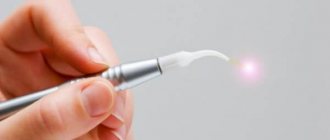The fact that one can judge a person’s character by the structure of his face was known in ancient times; thinkers such as Hippocrates and Aristotle wrote a lot about this in their scientific works. Nowadays, in some eastern countries, the diagnosis of traditional medicine is based on physiognomy, because health problems are also easy to “read” on a person’s face, even by the chin.
A very good indicator for determining a person’s character, his inclinations and talents, as well as possible behavioral problems, is the chin. It is interesting that the chin becomes fully formed only after the age of thirty - and it is then that the correct conclusions, from the point of view of physiognomy, can be drawn.
Physiognomy - chin in women
According to physiognomy, a woman’s chin can be used to read the character of its owner as if from an open book:
- Sharp - gives its owner politeness and courtesy, but at the same time - secrecy, cunning, and insincerity.
- Very long and sharp - the woman will be vindictive and vindictive , sometimes even cruel.
- Round - indicates that its owner lacks strength of character, but at the same time she is an excellent organizer, capable of making everyone around her work for her benefit.
- Oval - considered ideal for women who are artistic and loving. But their vitality and health in old age, unfortunately, will be greatly weakened.
- Square - does not make a woman very attractive, but gives her a strong character and perseverance, increased practicality and a desire for career growth.
- Forked - in a light form it gives a certain piquancy to its owner, speaks of the passion and sensuality of its owner.
Chin and character in women
What does folk tradition say?
There was a special attitude towards the dimple on the chin not only in European countries, but also here in Russia.
Men with cleft chins were generally not favored. They were credited with fickleness, unbridled temperament and stubbornness. In addition, in Russia, girls were also very fond of good fellows with dimples on their chins. Evidence of this can be found in folk beliefs described by Russian ethnographers I. Sakharov and A. Tereshchenko.
A Ukrainian folk song describes a handsome man who has won a girl’s heart: “...Vyshivanka shirt, tall and stringy, with a pit in his beard.”
There is a saying these days: “A dimpled chin is loved by idiots.”
However, the general disapproval of Russian people towards the dimple on a man’s chin is also caused by the fact that any feature of this part of the face is obvious only if the man is shaven. A smooth chin is only suitable for a very green boy, but not for an adult. The decoration of a man's face is a beard. A shaved chin, and even one marked with a dimple, was considered a sign of debauchery and depravity.
Moreover, there is something subtly foreign about the cleft chin. The Slavic type of appearance corresponds to a face with rounded, soft shapes. A firmly defined cleft chin is usually a sign of the “Nordic” type, characteristic of the Germans, for example. But Germans and any foreign people were not welcome in Rus'.
In Rus', women with a dimpled chin were treated somewhat more leniently. Popular rumor attributed to them love and kindness.
A dimple on a girl's chin was also considered a sign that her first-born would be a boy.
But at the same time, men were afraid of the stormy temperament of the owners of such a feature, because the popular saying said that “A dimple on the chin is the mark of a slut” (a stronger expression was used in the original).
What about the chin? A lot actually. Using it you can trace the stages of evolution and learn about a person’s character. It is special for each person and can tell a lot.
Chewing theory
Scientist James Pampush from the University of Florida said that this part of the body appeared only after the separation of human ancestors from other primates.
The evolution of the chin occurred at an incredible rate (about 77 times faster than the average rate of genetic drift).
The selection was formed between six million and 200 thousand years ago, most likely about two million years ago. The reason for this was the transition to “ready” food - boiled, fried, stewed in the fire. The load on the jaws and teeth, accustomed to processing coarse and hard food, has decreased. This theory, which has a right to exist, but is not the only one, competes with other options for the development of events. Probably, we also owe the appearance of the chin to the increase in the cerebral part of the skull, which resulted in the divergence of the branches of the lower jaw while shortening the length of the palate and upper jaw.
The theory is sociable
New Zealand scientists have constructed several three-dimensional models of the lower jaw, with and without a chin.
After carefully studying the variations under the various loads to which the muscles and bones were subjected, the scientists noticed that when the tongue is placed at a 45° angle in the jaw without a chin, the lower jaw experiences significant tension and tension.
The bones did not immediately, but over time, change their shape under the pressure of the tongue, which intensified in the process of evolution. According to scientists, our ancestors began to actively speak about 50 thousand years ago, around the same time the chin formed. It is curious that the chin is fully formed when a person reaches 30 years of age, after which one can judge its real shape.
Hormonal theory
Nathan Holton, an anthropologist from the University of Iowa, initially agreed with the theory of American scientists, but later changed his point of view. Together with a group of university colleagues, the scientist looked at many X-ray images of people aged three to sixty years old and compared them with images of Neanderthal skulls.
The conclusion was clear: a pronounced chin may simply be a side effect of evolutionary changes in our faces.
Scientists have noticed that our ancient ancestors do not have a chin; it is weakly expressed in children and at the same time becomes more developed with age. But children's jaws can withstand loads better than the jaws of an adult! The fact is that in the process of development, the genus Homo (which includes humans, Neanderthals and our other ancestors) experienced evolution with a distinct decrease in the face. Holton believes that the cause of smaller faces is hormonal changes that have been associated with a decrease in violence and the emergence and increase of cooperation between people.
The theory is attractive
Traditionally, a prominent chin was believed to be a sign of sexuality and masculinity. Allegedly, the chin evolved to serve as an indicator of sufficient testosterone and to highlight the male as an advantageous match, like the feathers of a peacock.
This is how heroes were portrayed in cartoons and films, such as Superman’s pronounced chin and Arnold Schwarzenegger’s prominent lower jaw. Unfortunately, this assumption is not true, because women also often have noticeable and prominent chins.
A short note on this issue was published by National Geographic magazine, where the author of the article claims that there is no precedent in nature for a dominant sexual characteristic to be present in both males and females, from which we conclude that the chin has nothing to do with sexuality and human capabilities (except subconsciously).
Physiognomy and perception
The chin plays a huge role in the perception of the image of the interlocutor, hence the common phrases “strong-willed chin” and “weak-willed chin”.
If we believe the results of statistical studies, we can distinguish several types of chins and the corresponding psychological qualities of the owner.
For example, a pointed chin in a woman indicates difficulties in communication, while in men it indicates cruelty and vindictiveness. A rounded shape often indicates not only a lack of strong character, but also the ability to organize work around oneself.
An oval chin, especially among the fairer sex, is considered a standard of beauty, hence the qualities attributed to its owners - artistry, sexuality and attractiveness.
A square chin in men, in turn, indicates a strong and independent character. If the chin protrudes forward, then this speaks of lust for power, pride and the desire to benefit from everything.
A weakly defined chin with a slight split indicates a passionate nature, and a stronger split indicates a love of reclusion. A strong cleft chin is a sign of increased sexuality of its owners. But the presence of a dimple on the chin speaks of the owner’s goodwill, stubbornness and unpredictability. By the way, popular rumor interprets this feature as a sign of sensuality, and in Ancient India and Persia, a dimple on the chin was considered a bad sign, and such “marked” ones could not become courtiers and priests.
"Double chin"
In fact, it is not a chin at all, but a fold of fat under it. The defect visually distorts the proportions of the face and gives it heaviness. In addition, it is almost impossible to disguise it (although a beard comes to the rescue of men).
The causes of this defect may be hereditary and age-related factors, sudden weight gain, high pillows and the habit of slouching and keeping the head down. By the way, to gain an “extra” chin, you need to gain about 2-3 kg in weight for a woman up to 165 cm and about 5-7 kg for taller women.
If in your early years you developed a double chin, it means that the mass of adipose tissue in the body is at least 10%. You can combat the deficiency both surgically and publicly - through gymnastics, massage, sports and proper nutrition.
The post What a chin can say about a person appeared first on Smart.
The face reflects a person’s character through his gaze, the pattern of wrinkles, and the corners of his lips. But some of his features have long been endowed with special personality traits, as evidenced by popular phrases and sayings: smart forehead, honest eyes, strong-willed chin. This article is devoted to the latter.
Physiognomy - chin in men
- Based on the base of the face, the chin, you can analyze a man’s character. And to make it as accurate as possible, examine the chin of the man you are interested in both from the front and in profile.
- In general , by the shape, size and characteristics of a man’s chin, physiognomy judges the stamina of its owner, his endurance and ability to concentrate on anything. The expressiveness of the entire face as a whole depends on the significance of the chin.
- By size : powerful, well-defined chins - for confident men who are ready to fight; small - among sensual guys who are sensitive to criticism and who need praise.
- Width : wide – for strong, hardy men who can easily overcome all obstacles in their path; narrow - for gentle, soft men, distinguished by delicacy and romanticism in relationships.
- Shape : round - for responsive, caring men with a big soul, ready to help those who need it; angular - among males striving for high ideals, avid debaters; pointed - among lovers of free life, a kind of lone wolves who are extremely difficult to control.
- In side view : oblique - for lazy, weak-willed men who are ready to keep silent about something and even lie in order to avoid conflict; speaker - very strong personalities who are ready to overcome any obstacles on the path to success; double - for men endowed with power, strong in character, and commanding the respect of others.
Chin in men
Read also
Chin
Chin Since ancient times, the chin has been considered an indicator of stamina, endurance and concentration. The more sloping the forehead and the more pronounced the chin, the more expressive the face. A forehead that protrudes forward is a sign of developed mental abilities. Traditionally very prominent among the people
Chin
Chin Many books have repeated that only humans have a chin, but this is true only in relation to the skeleton. What is certain, however, is that the higher races have a strong aversion to small and barely noticeable chins. And indeed, this is a sign of inferiority
§67. Volitional qualities of a person
§67. Volitional qualities of a person Characterizing the volitional qualities of a person, we will highlight, firstly, those that relate to the motivation of volitional action, secondly, those that manifest themselves in decision making, and thirdly, those that are associated with the execution of the decision made. 1.
FOCUS 13 Chin
FOCUS 13 Chin The ideal chin is well formed, rounded on all sides, slightly protruding. Such a chin predetermines great vitality, good health and good offspring. However, all this will come true only if the chin is balanced with
Volitional personality traits
Volitional qualities of a person In accordance with the complexity of volitional activity, the various volitional qualities of a person are also complex and diverse. Among the most important of these qualities, one can, firstly, highlight initiative. It is often said that “the first step is difficult.” Skill
PRIORITY 7: LARGE NOSE AND DECISIVE CHIN
PRIORITY 7: LARGE NOSE AND DETERMINED CHIN A large nose, determined chin and forehead allowed a man to protect his face from blows during battle or hunting. These traits are a sign of undeniable masculinity. Men with high testosterone levels have
§ 3. Volitional states and volitional qualities of the individual
§ 3. Volitional states and volitional qualities of the individual Conscious regulation of activity requires a system of volitional mental states: initiative, determination, confidence, determination, perseverance, etc. These volitional states are manifested in their
7.1. What are volitional personality traits?
7.1. What are the volitional qualities of a person? The manifestation of will (more precisely, willpower, volitional effort) in various specific situations makes us talk about the volitional qualities (properties) of a person. Moreover, both the very concept of “volitional qualities” and a specific set of
8.1. Volitional qualities associated with determination
8.1. Volitional qualities associated with determination In the textbook “Psychology of High Achievement Sports” [1979], determination is defined as consciousness of the most important life goals, their clear and clear presentation, faith in these goals, and the ability to understand their essence.
8.2. Volitional qualities characterizing self-control
8.2. Volitional qualities that characterize self-control P. A. Rudik defined self-control as the ability not to get lost in difficult and unexpected circumstances, to control one’s actions, while showing prudence and restraining negative emotions. According to P. I.
8.3. Characteristics of volitional behavior (complex moral and volitional qualities)
8.3. Characteristics of volitional behavior (complex moral and volitional qualities) Real volitional behavior of a person is often determined by a combination of many personal qualities, and not only volitional, but also moral (moral). Therefore, when characterizing volitional behavior
Physiognomy: chin shape and character
Physiognomy and analysis of the shape of the chin is an excellent indicator of a masculine character:
- Round – it happens in men who are responsive, caring, hospitable, generous and open. For such people, caring for others and solving their problems comes first. They are also called kind-hearted.
- Angular - characteristic of ideological men who spend their whole lives in motion to achieve some high goals, striving for ideals. These are principled people, ready to prove they are right until they are hoarse, and selflessly argue.
- Pointed - such a man is very independent , not subject to any outside influence, and always takes the advice and recommendations of others with hostility. The only exception can be if the adviser can clearly argue for the need to perform certain actions and convince such a man.
Mentoplasty
The branch of plastic surgery to correct the size and shape of the chin is called mentoplasty. To increase it, an implant is inserted under the periosteum. The operation does not leave any visible scars, because the incision is made on the oral mucosa of the face. The rehabilitation period does not exceed three days. Surgeon Brent Moellken from California speaks of hundreds of men who try to change their appearance in this way. Actors do this because they no longer want to play the roles of weak characters, and heroes require a certain type of face.
Why do women do this? To look like real ladies. Implantation solves several problems at once:
- Facial proportions are corrected.
- The neck is visually stretched.
- The cheeks are removed, making the cheekbones more defined.
- If necessary, the double chin is removed.
Many years have passed since the times of Aristotle and Hippocrates, who saw the connection between a person’s appearance and the characteristics of his character. Ideas about the ideal appearance of a person, which evokes the respectful perception of others, are changing. Today, one of its most important indicators is a strong-willed chin.
Physiognomy: double chin in men - character
- If a double chin is observed in an overweight man, then it is a completely natural phenomenon that should be gotten rid of as part of the general fight against unnecessary kilograms.
- But for a fit representative of the stronger sex, the physiognomy of a double chin tells of a good old age, surrounded by children and grandchildren, in prosperity and respect with good health.
- But the owners of a small but excessively fleshy double chin are noble voluptuous people.
Double chin
Physiognomy: square chin in men - character
- Square-shaped chins give the face masculinity, firmness, and a strong masculinity, which is undoubtedly attractive to women.
- It must be remembered that, in addition to such masculine features, the physiognomy of a square chin can speak of a person’s enchanting stubbornness and willfulness. And if it protrudes slightly forward and sticks up, then add to this practicality, even some commercialism, as well as a craving for power.
Square chin
Rules for reading information from people's faces
To obtain the most accurate picture in the study of a person’s facial features (physiognomy), it is necessary to adhere to several rules:
- When examining someone's face, you don't need to look at it closely. If a person notices that you are studying him, he will suspect something is wrong and begin to get nervous.
- Don't stand close. The information you receive will be unreliable. The optimal distance should be at least 50 centimeters.
- It is necessary to study a person in dim, diffused light.
- Don't try to read the face of a drunken opponent. Alcohol distorts the picture and hides some nuances.
- Don't study the face of a sleeping person. In the arms of Morpheus, all people change.
- Don't try to read anything on a heavily tanned face.
Physiognomy: chin forward - character
- By looking at a person in profile, you can assess how much his chin protrudes.
- In men with a strongly protruding chin, according to physiognomy, such qualities as stubbornness and perseverance predominate in their character; they will purposefully move towards their goal, and are very success-oriented.
- The motto of such men is: “Only victory - and nothing else!” They are not afraid of any obstacles or difficulties on the way to a result.
How to get rid of a double chin at home
Vacuum self-massage with cups is our favorite way to combat a double chin.
To work on the neck and area under the lower jaw, you need special glass jars for the face. ). Beauty365 has these - look for them in the online store www.beauty365.ru.
Banks have captivated thousands of participants in our online marathons.
How do they work?
- Creates a lymphatic drainage effect - swelling goes away!
- They restore the tone of sagging skin - it becomes firm, elastic, and resists stretching from fat and swelling; the oval of the face is tightened; even wrinkles are erased like an eraser.
- Restore muscle balance - no spasms!
Apply natural oil or Beauty365 squalane to your face, neck and décolleté (this should be done so that the jars glide easily) and begin massaging, moving along the massage lines. It's simple: the movement pattern is indicated on the packaging of vacuum cans. But for greater confidence, you can follow the procedure under the video with instructions:
Physiognomy: wide chin - character
- The width of a man's chin, according to physiognomy, is directly dependent on his strong-willed character traits. That is, a man with a very wide chin will be surprisingly resilient, physically strong, stress-resistant, and able to fight the aggressive outside world.
- Such a man will not be a romantic or talk much about his feelings, but, believe me, he will do a lot.
- Such men are well suited for leadership positions, as they can take responsibility for large teams.
Wide chin
Physiognomy: sharp chin - character
Physiognomy - sharp chin:
- A man with a sharp chin needs to be extremely careful when giving advice or tasks - he can react extremely negatively to this. And the stronger the pressure, the more violently you will receive a rebuff. It may even seem to you that you are “throwing pearls before swine,” but in fact, in this case, it is better not to unfoundedly insist on fulfilling your demands, but to specifically explain to a man with a sharp chin why a certain task should be completed and what the benefits will be for everyone. benefit.
- Such debaters are candidates for the development of diseases “based on nervousness”: problems with the gastrointestinal tract, allergies, and so on. Therefore, owners of a sharp chin should work on themselves and avoid conflicts with others. And also - learn to relax, take a break from irritating factors (best of all - alone in the lap of nature).
Spicy
Famous personalities
The conclusions are confirmed by examples from the lives of celebrities. Thus, the Duchess of Cornwall, whose strong-willed chin can be seen in the photograph, had an affair with Prince Charles before divorcing her first husband, Andrew Parker-Bowles. And the owner of a neat lower face, Joanne Woodward, lived her entire life in marriage to Paul Newman, a Hollywood star who drove women crazy with his bottomless blue eyes.
Women's strong-willed chins rarely have a quadrangular shape. They are more rounded and attractive in appearance. They often make the proportions of the face, especially in its lower third, more correct and perfect. Celebrities with a protruding jaw include Julianne Moore, Cynthia Nixon, and Ksenia Sobchak. Many Hollywood careers began with chin augmentation through implantation. Among women, Angelina Jolie, Haley Bury, and Jennifer Aniston decided to undergo such surgery. Their appearance has benefited so much from this that today many are wondering how to make a strong-willed chin.
Sloping chin - physiognomy
Sloping chin - physiognomy:
- Looking at a man in profile, you can see a sloping chin. Unfortunately, for representatives of the stronger sex this is not a very good sign, which indicates laziness and the absence of some kind of inner core.
- These are people who are “both yours and ours,” that is, they want to remain good for everyone, and this is simply impossible. As a result, you may hear half-truths from them, a trick convenient for them.
- They rarely get into arguments and are in no hurry to defend their rightness, preferring a bad peace to a good war.
Small chin - physiognomy
- Size , in the case of studying the chin in physiognomy, is of fundamental importance.
- Thus, men with a small chin are usually very self-critical (even excessively), so adding to this a negative assessment of their activities from the outside, you can end up with real hysteria or depression.
- Therefore, if you do not want to hurt such a man, then it is better to praise him once again and provide moral support. After all, he adapts very poorly to aggressive reality; he simply organically cannot stand competition.
Small chin
Cleft chin - physiognomy
- Men with a strong, strongly cleft chin, as physiognomy says, are wonderful lovers, simply sparkling with sexuality. The masculine principle is very strongly expressed in them.
- If a man’s chin is slightly forked and poorly defined, then its owner is a passionate person, ready for experiments and strong experiences.
- strongly cleft but weakly defined chin signals his desire for loneliness, homelessness, even a kind of seclusion .
Forked
What does physiognomy say?
Physiognomy - the so-called doctrine according to which a person’s personality type, his mental qualities and even his state of health are associated with his facial features - is today considered a pseudoscience.
However, for centuries this connection was considered an undeniable scientific truth. A number of serious scientists paid tribute to physiognomy. Including the Swiss anthropologist and writer Lavater (1741-1801), the Italian doctor Montegazza (1831-1910) and the Italian psychiatrist Lambroso (1835-1909).
Lavater considered a dimple in the chin a sign of good nature. Montegazza, without disputing this statement, noted that the dimple, increasing attractiveness, indicates that this person has a more beautiful body than his soul. As for Lambroso, he, who described in his writings the appearance features of “typical criminals,” paid special attention to the chins. In his opinion, a protruding quadrangular, cleft chin reveals a born killer. A neater chin, with a cleft in the middle, is characteristic of a swindler, whose appearance is generally quite good-natured and attractive.
These statements can be treated as you like, but they are based on beliefs that have existed for centuries.
It has long been believed that people with a dimple on their chin were “kissed by God.” These are bright, extraordinary and artistic natures. And at the same time, they have a number of traits that make them quite dangerous individuals.
Men with such dimples are distinguished by their strong-willed character, courage and recklessness, bordering on adventurism. They tend to act rashly and lack patience. In addition, men with a dimpled chin tend to be very popular with women and have an inordinate sexual appetite.
Women with this facial feature, according to physiognomists, are impulsive, selfish and incapable of compromise. At the same time, they are very attractive to men; dimples give their appearance a certain “zest”.
Thus, the owner of a cleft chin - be it a woman or a man - is simply a walking force of nature.
A dimple on a man’s chin – meaning, physiognomy
- A dimple on a man’s chin, according to physiognomy, indicates that the owner of such an anatomical phenomenon will be purposeful , determined in achieving his goals, and persistent .
- These are men with strong character and iron willpower - and the deeper the hole, the more strongly these qualities will manifest themselves.
- Women simply adore such men because they intuitively recognize their bright temperament and love of love.
Dimple
If you are interested in physiognomy, we also advise you to read the following articles:
- Physiognomy: how to determine character by eyebrows?
- Physiognomy of lips - what do they mean in the character of men and women?
- Physiognomy of a man and a woman by the shape and location of wrinkles, moles on the face, facial expressions
- How to read a person’s character by facial features - physiognomy











